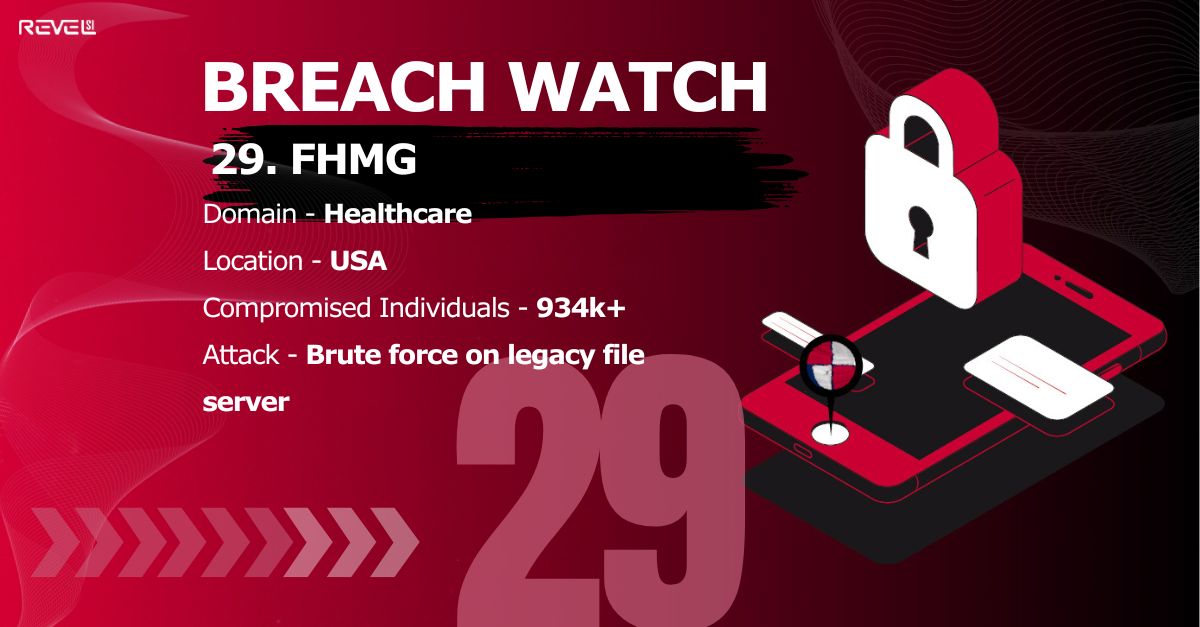934,000 Records Compromised in the Frederick Health Cyberattack

The Frederick Health Ransomware Attack
In late January 2025, Frederick Health Medical Group (FHMG), a prominent healthcare provider in Maryland, fell victim to a ransomware attack that compromised the personal and medical information of nearly one million individuals. For decision-makers in healthcare and cybersecurity alike, this incident is a stark reminder that even well-established organizations remain vulnerable — and that proactive security is no longer optional.
What Happened?
The attack unfolded on January 27, 2025, when FHMG detected unauthorized activity within their network. In response, they immediately took their IT systems offline to contain the threat and engaged third-party cybersecurity experts to assess and remediate the situation.
The investigation revealed that attackers had accessed a file-sharing server and exfiltrated sensitive data. While electronic medical records were reportedly untouched, the breach still exposed a trove of highly sensitive information: names, addresses, dates of birth, Social Security numbers, driver’s license numbers, medical record identifiers, health insurance details, and clinical information related to patient care.
As of today, no ransomware group has claimed responsibility. The stolen data has not yet appeared on the dark web, leading to speculation — unconfirmed — that a ransom may have been paid.
The Hidden Risks
For the individuals affected, the risks are significant. Exposure of personal identifiers alongside medical and insurance data creates fertile ground for identity theft, insurance fraud, and phishing attacks.
For FHMG, the consequences are equally severe. In addition to reputational damage, the organization now faces multiple class-action lawsuits alleging inadequate cybersecurity practices and delayed breach notifications. Regulatory scrutiny is intensifying, and the long-term costs — financial and operational — will likely be substantial.
Key Takeaways for Healthcare Leaders
Frederick Health’s response highlights some critical lessons for organizations across the healthcare sector.
First, swift containment is vital. FHMG’s rapid system shutdown helped prevent further spread of the attack, a move that likely mitigated additional damage. However, speed must be matched with preparedness — incident response plans need to be tested and refined regularly, not drafted reactively after a breach.
Second, protective measures must go beyond compliance checklists. Sensitive patient data, even outside core electronic medical records, needs strong encryption, access controls, and continuous monitoring. Security must encompass every system that holds or transmits valuable information.
Third,transparency and legal readiness are crucial. The reputational hit from a breach is amplified if patients feel they are being kept in the dark. Timely notification and offering support services like credit monitoring are now expected — but legal liability remains if organizations are found to have cut corners beforehand.
Finally, and most critically, cybersecurity must be treated as a strategic imperative
at the leadership level. Ransomware is no longer a distant risk; it is a pressing, persistent threat that demands ongoing investment in technology, people, and processes.In a landscape where healthcare is increasingly digital, the Frederick Health ransomware attack is not an isolated case — it is a harbinger. The question for decision-makers isn't if their organization will be targeted, but when — and how ready they will be to respond.
Stay Safe
